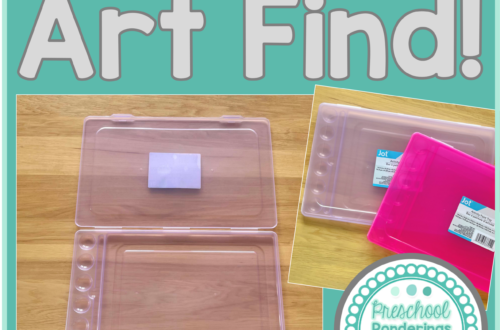Movement Art
I planned an entire series of posts for this week thinking “It’s February, everyone’s been cooped up inside all winter and we need to MOVE.” Ha, clearly the joke is on me because it’s supposed to be 60 degrees all week here where I am so, all the little ones I know will get plenty of outside time. If the same can’t be said of your home, then this week is for you! If you’re lucky like me and getting some warm weather then be sure to stash these activities away for cold rainy days that are sure to come your way before spring officially gets here.
This particular activity is one of my favorite ways to encourage children who don’t typically choose to participate in art activities to join us for art – drawing or painting to music.
I always start by covering a table with a large piece of paper, which allows for free movement and collaboration, and minimizes the “that’s my paper!” arguments. Then I select a playlist. The Piano Guys are my personal favorite for a mix in tempos and styles, and they are available on CD or you can stream their channel on Pandora. Another great option is a mix of Disney songs, which work well because they usually include ballads as well as up-tempo dance beats.
Choose your art media based on the music and level of activity that you expect. Paint is fun, but if you’re rocking to dance tunes you may want to stick with the crayons or markers to minimize the mess.
I give the children just a couple of simple rules;
- Draw or paint to the music. This takes some practice to get used to, but encourage them to focus on the tempo.
- Be aware of those around you. I let my students know that it is fine for them to move around as they work, both in their own space and moving to new spaces on the paper, but they should look out for each other and try not to impose on others’ space.
- Have fun. This is meant to be a little silly, there should be giggles and large movements. If you aren’t sure how well your students will be able to regulate their bodies and reactions to the music consider working with small groups, 3 or 4 children at a time to see how it goes.



